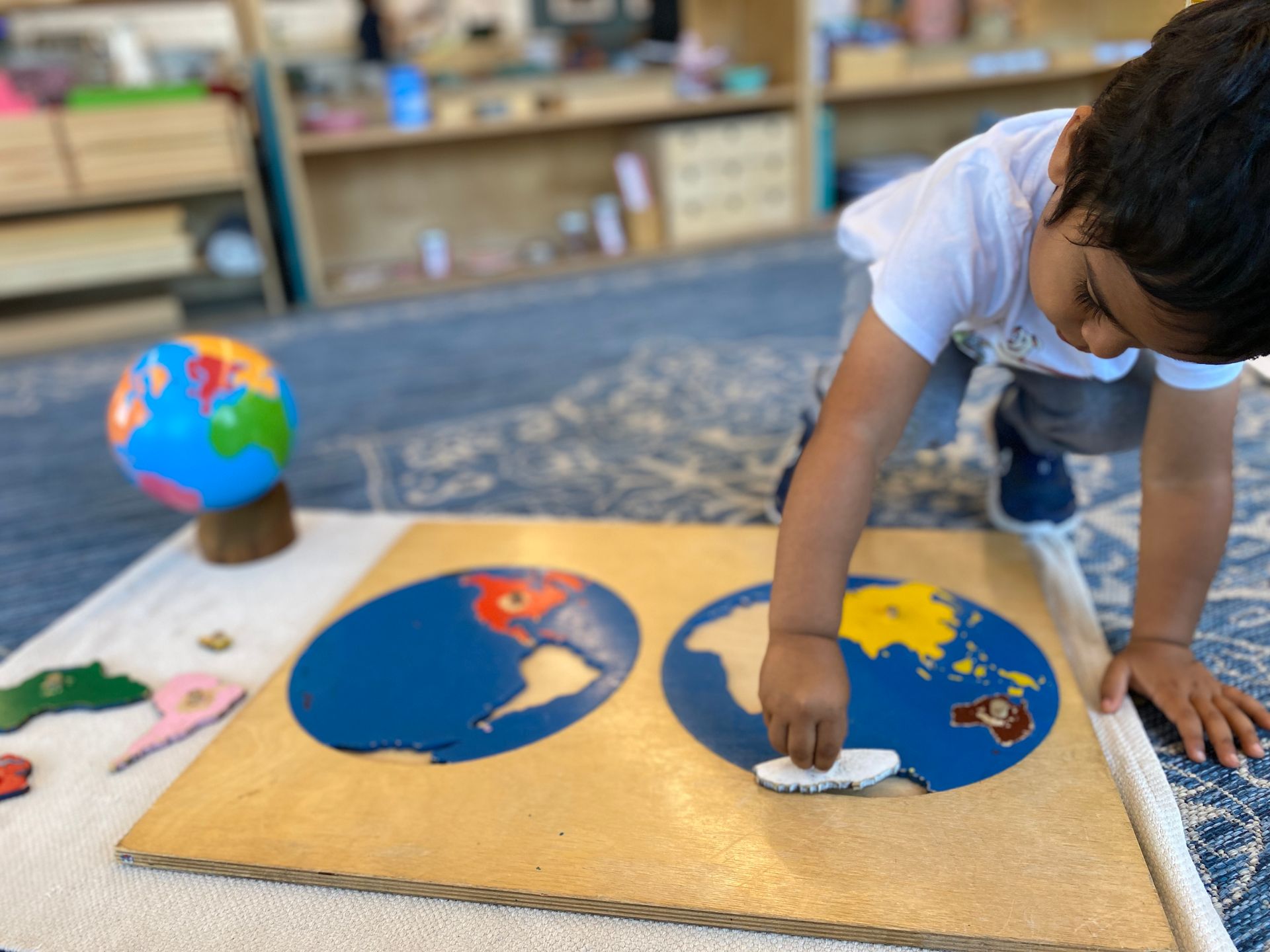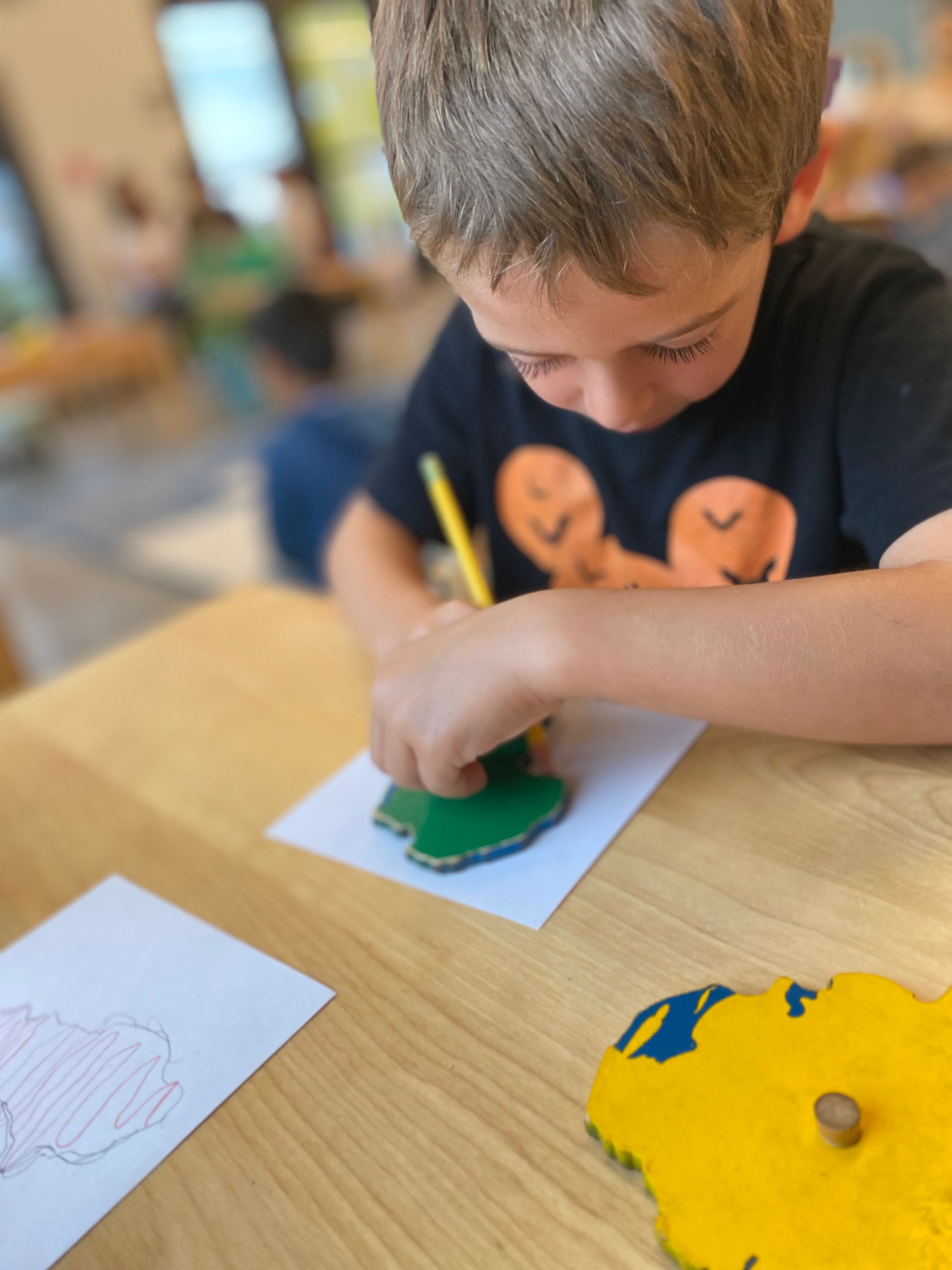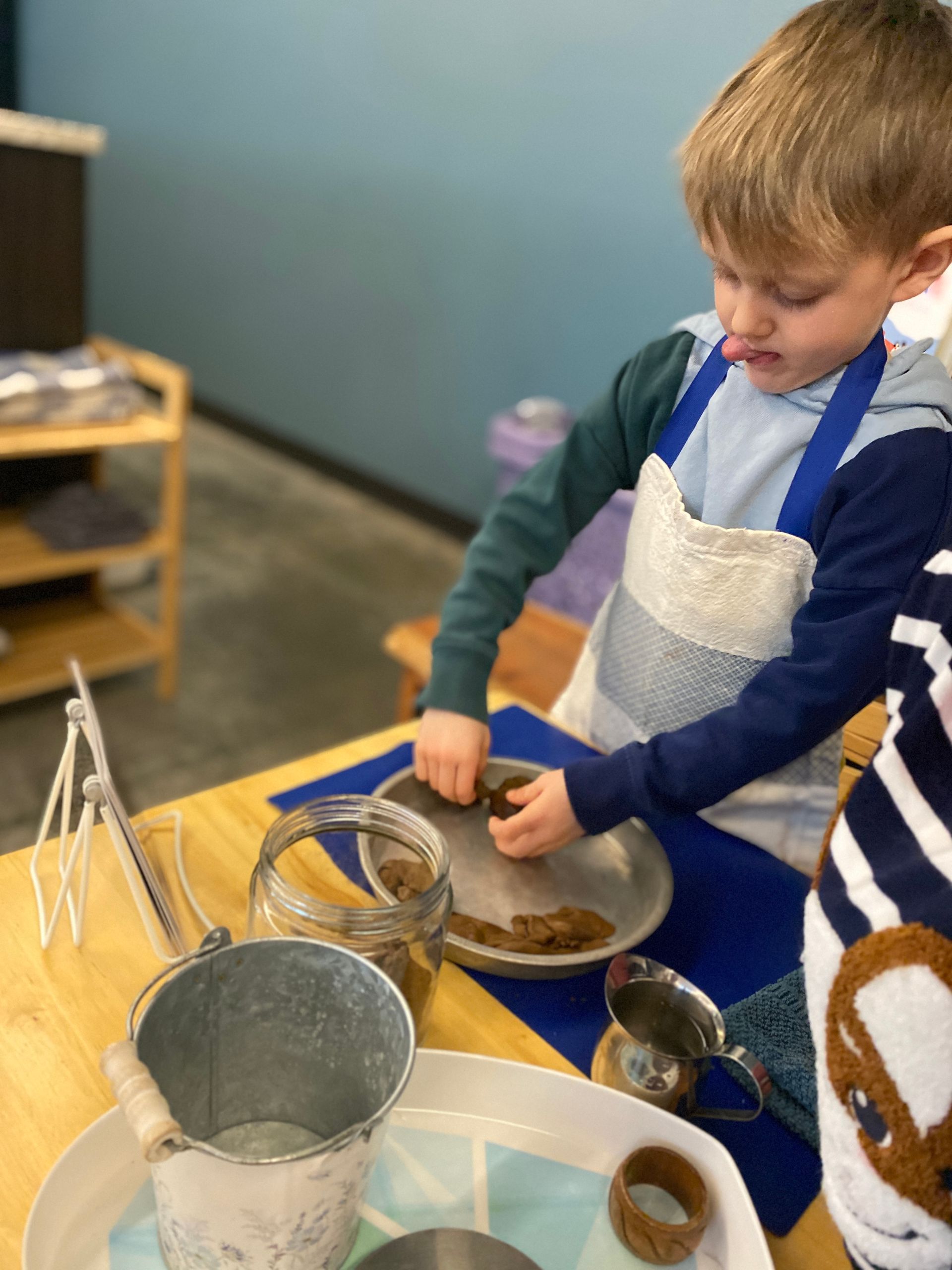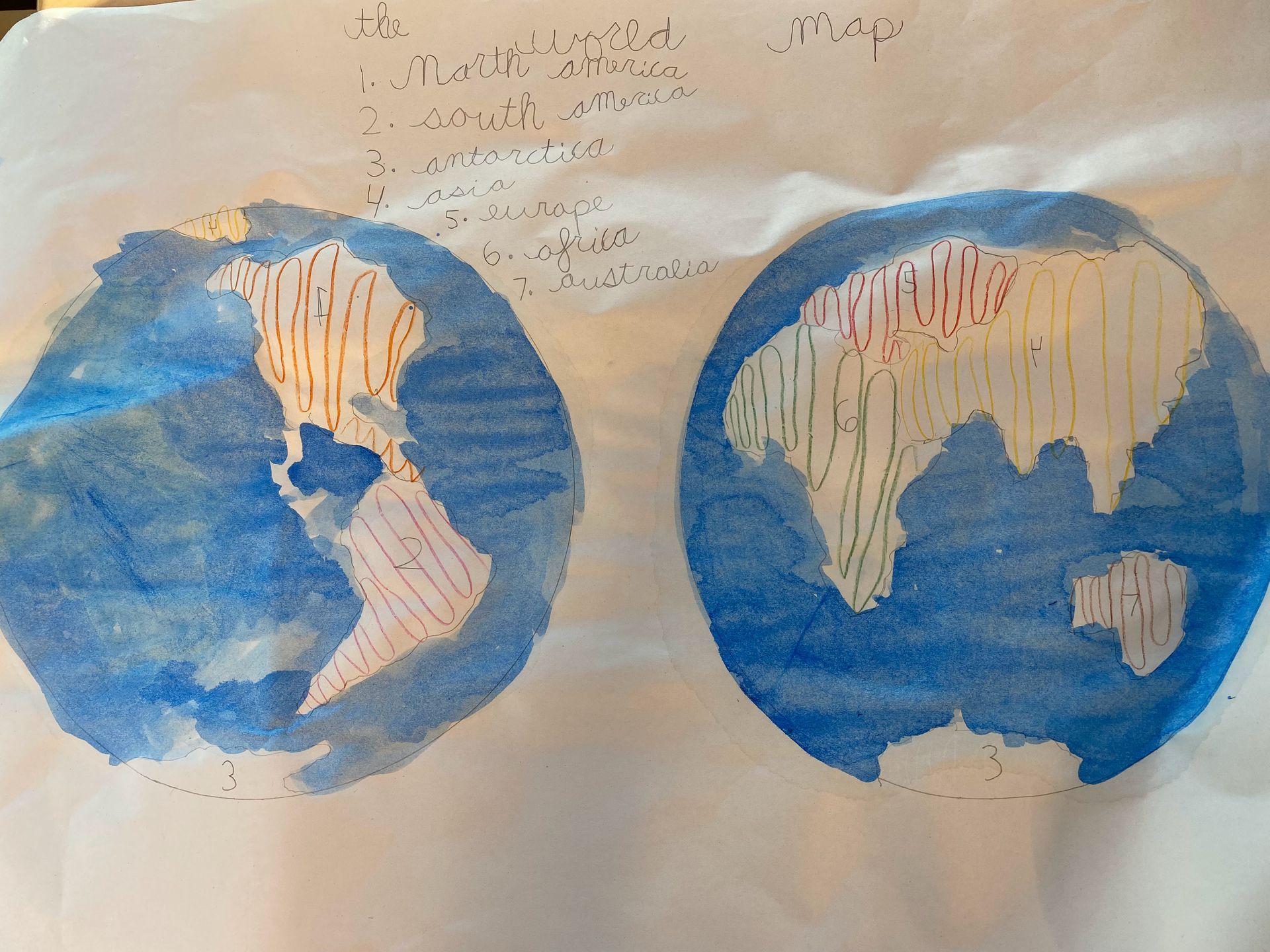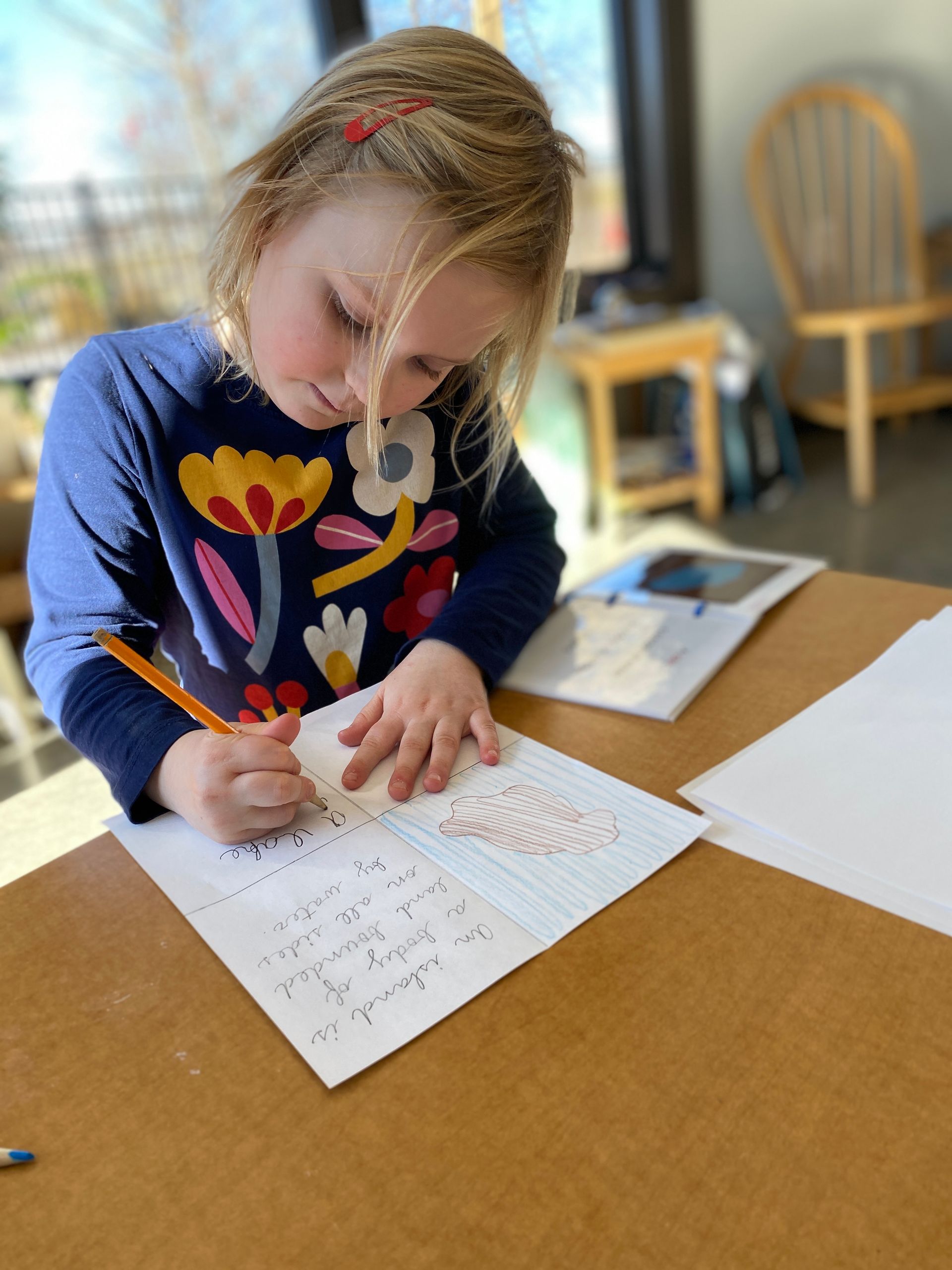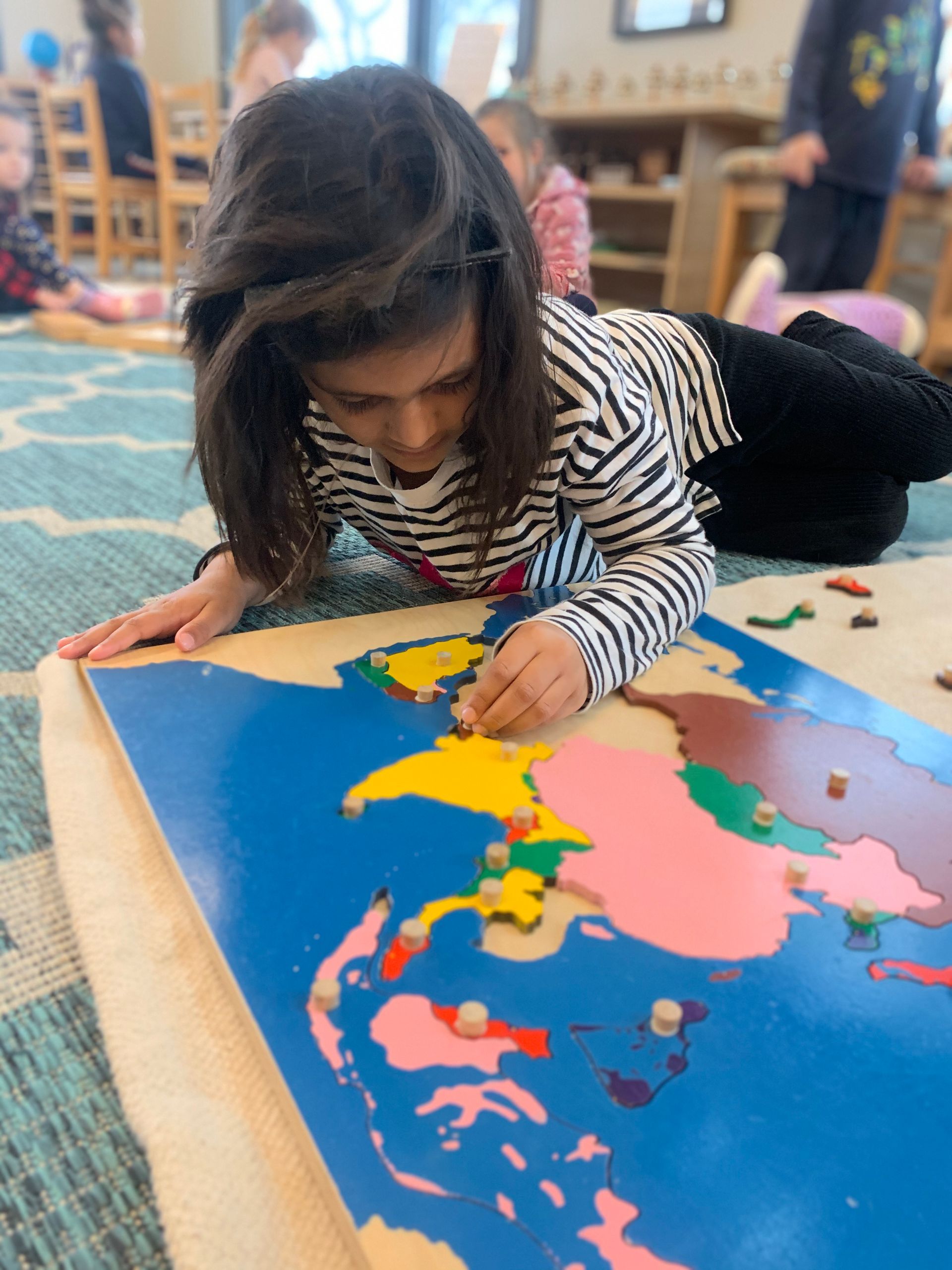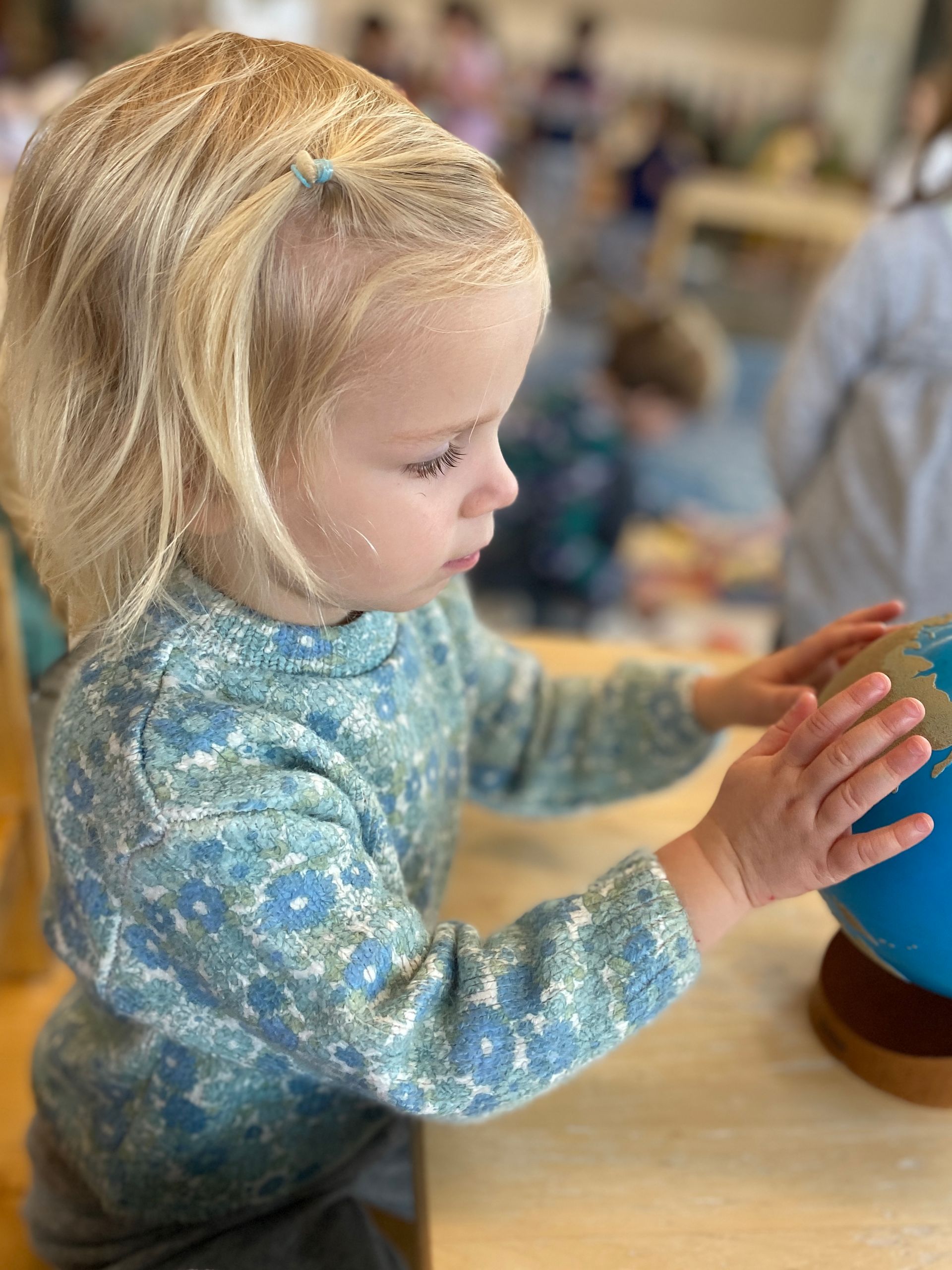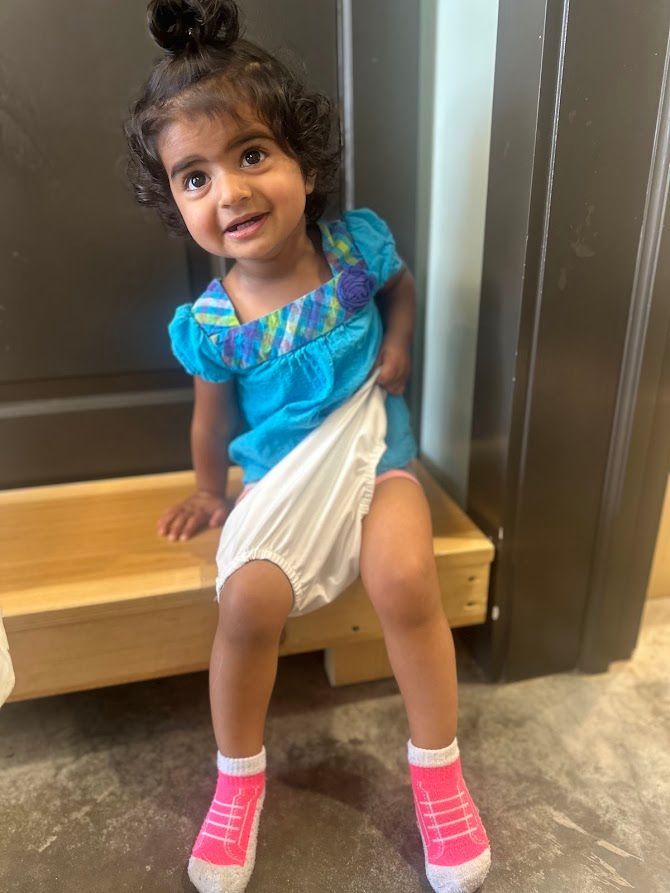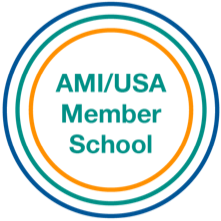“If the idea of the universe be presented to the child in the right way, it will do more for him than just arouse his interest, for it will create in him admiration and wonder, a feeling loftier than any interest and more satisfying. The child’s mind will then no longer wander, but becomes fixed and can work. The knowledge he acquires is organised and systematic; his intelligence becomes whole and complete because of the vision of the whole that has been presented to him, and his interest spreads to all, for all are linked and have their place in the universe on which his mind is centred.”
MARIA MONTESSORI
Geography in the primary classroom begins within the Sensorial area. These materials are concrete aids for the child in this plane of development. Many of the materials within geography will strengthen the child’s special abilities as well as aid in understanding the world at large. Geography materials consist of globes, maps, land and water forms, photo cards, books and other cultural extensions. Before the child begins work with the geography materials, he learns the sensorial qualities of rough and smooth. Then, then child will begin working with specific geography materials by first being introduced to the globes. The Sandpaper Globe is a small globe (a small version of the Earth) with the water being smooth and blue, and the land being rough sandpaper and beige in color. The language introduced with the Sandpaper Globe is Land and Water. The second, Painted Globe, consists of the same smooth, blue water. The sandpaper land is now smooth with each continent a different color. It is here the child learns the reference of land is called continent and water, ocean.
Once the vocabulary is learned with the globes, the child can then begin work with the famous Puzzle Maps. The Puzzle Maps are an iconic Montessori material. There is a World Map, a map for each continent (except Antarctica) and then a USA Puzzle Map. The Puzzle Maps can initially be used sensorially by the youngest child. Extended work with this materials includes three period lessons can be presented to help the child learn the names of the continents, countries or states. An older child, who is able to write and knows the vocabulary of each piece of the map, will create a map on paper. This is incredible work for the children and they are excited to finally receive this lesson.
Other geography materials include Continent Folders and Land and Water Forms. Continent folders are individual folders for each continent that contain photos of people, animals and architecture in various continents. It provides the child with an opportunity to learn about other cultures and peoples.
Land and Water Forms in the classroom are presented with two different materials. Three dimensional land structures allow the child to pour water where needed, creating the very visible water form and it corresponding land form. Picture cards of each land and water form are also available. These three part cards, or Nomenclature Cards, integrate with the language materials. The three cards for each land and water form consists of a photo, a separate label with the name and a card that contains both the photo and the name. The child uses these cards when they are able to read and know the vocabulary for the land and water forms.
It’s truly impressive the impact these materials have on the child. Working with the Globes, Puzzle Maps and Land and Water Forms, the children are able to build spatial skills and increase vocabulary. They are able to gain knowledge about the world around them. Maria Montessori once noted that if she could give anything to a child, it would be for each child to have a globe of the world. It’s no wonder these materials are so inviting and engaging!

